A lot of the information on this page is from The Ancient Egypt Site (AES below), the site Ancient Egypt (AE below), and from Wikipedia. These sites have a lot of information and consistent time lines, although they differ. All the hieroglyphic names are from the AE website. The times are from Wikipedia.
From the New Kingdom of Egypt entry in Wikipedia:
The New Kingdom, also referred to as the Egyptian Empire, is the period in ancient Egyptian history between the sixteenth century BCE and the eleventh century BCE, covering the 18th, 19th, and 20th dynasties of Egypt. Radiocarbon dating places the exact beginning of the New Kingdom between 1570 BCE and 1544 BCE. The New Kingdom followed the Second Intermediate Period and was succeeded by the Third Intermediate Period. It was Egypt's most prosperous time and marked the peak of its power.
The concept of a "New Kingdom" as one of three "golden ages" was coined in 1845 by German Egyptologist Baron von Bunsen, and its definition would evolve significantly throughout the nineteenth and twentieth centuries. The later part of this period, under the 19th and 20th dynasties (1292–1069 BCE), is also known as the Ramesside period. It is named after the eleven pharaohs who took the name Ramesses, after Ramesses I, the founder of the 19th Dynasty.
Possibly as a result of the foreign rule of the Hyksos during the Second Intermediate Period, the New Kingdom saw Egypt attempt to create a buffer between the Levant and Egypt proper, and during this time Egypt attained its greatest territorial extent. Similarly, in response to very successful seventeenth-century BCE attacks during the Second Intermediate Period by the powerful Kushites, the rulers of the New Kingdom felt compelled to expand far south into Nubia and to hold wide territories in the Near East. In the north, Egyptian armies fought Hittite armies for control of modern-day Syria.
The 18th Dynasty included some of Egypt's most famous kings, including Ahmose I, Hatshepsut, Thutmose III, Amenhotep III, Akhenaten, and Tutankhamun. Hatshepsut concentrated on expanding Egypt's external trade, including sending a commercial expedition to the land of Punt, and made the kingdom prosperous.
Ahmose I is viewed to be the founder of the 18th Dynasty. He continued the campaigns of his father Seqenenre Tao and of Kamose against the Hyksos until he reunified the country once more. Ahmose would then continue to campaign in the Levant, the home of the Hyksos, to prevent any future invasions on Egypt.
Ahmose was followed by Amenhotep I, who campaigned in Nubia and was followed by Thutmose I. Thutmose I campaigned in the Levant and reached as far as the Euphrates. Thus becoming the first pharaoh to cross the river. During this campaign, the Syrian princes declared allegiance to Thutmose. However, after he returned, they discontinued tribute and began fortifying against future incursions.
Hatshepsut was one of the most powerful pharaohs of this dynasty. She was the daughter of Thutmose I and the royal wife of Thutmose II. Upon the death of her husband she ruled jointly with his son by a minor wife, Thutmose III, who had ascended to the throne as a child of about two years of age, but she eventually she ruled in her own right as king. Hatshepsut built extensively in the Karnak temple in Luxor and throughout all of Egypt and she re-established the trade networks that had been disrupted during the Hyksos occupation of Egypt during the Second Intermediate Period, thereby building the wealth of the 18th Dynasty. She oversaw the preparations and funding for a mission to the Land of Punt. After her death, having gained valuable experience heading up the military for Hatshepsut, Thutmose III assumed rule.
Thutmose III ("the Napoleon of Egypt") expanded Egypt's army and wielded it with great success to consolidate the empire created by his predecessors. This resulted in a peak in Egypt's power and wealth during the reign of Amenhotep III.
The term pharaoh, originally the name of the king's palace, became a form of address for the person who was king during the reign of Thutmose III (c. 1479–1425 BCE).
Widely considered a military genius by historians, Thutmose III conducted at least 16 campaigns in 20 years. He was an active expansionist ruler, sometimes called Egypt's greatest conqueror or "the Napoleon of Egypt". He is recorded to have captured 350 cities during his rule and conquered much of the Near East from the Euphrates to Nubia during seventeen known military campaigns. He was the first pharaoh after Thutmose I to cross the Euphrates, doing so during his campaign against Mitanni. He continued north through the territory belonging to the still unconquered cities of Aleppo and Carchemish and quickly crossed the Euphrates in his boats, taking the Mitannian king entirely by surprise.
The wealthiest of all the kings of this dynasty is Amenhotep III, who built the Luxor Temple, the Precinct of Monthu at Karnak and his massive Morturary Temple. Amenhotep III also built the Malkata palace, the largest built in Egypt.
One of the best-known 18th Dynasty pharaohs is Amenhotep IV, who changed his name to Akhenaten in honor of the Aten, a representation of the Egyptian god, Ra. His worship of the Aten as his personal deity is often interpreted as history's first instance of monotheism. Akhenaten's wife, Nefertiti, contributed a great deal to his new direction in the Egyptian religion. Nefertiti was bold enough to perform rituals to Aten. Akhenaten's religious fervour is cited as the reason why he and his wife were subsequently written out of Egyptian history. Under his reign, in the fourteenth century BCE, Egyptian art flourished in a distinctive new style. (See Amarna Period)
By the end of the 18th Dynasty, Egypt's status had changed radically. Aided by Akhenaten's apparent lack of interest in international affairs, the Hittites had gradually extended their influence into Phoenicia and Canaan to become a major power in international politics—a power that both Seti I and his son Ramesses II would confront during the 19th Dynasty.
The last two members of the 18th Dynasty—Ay and Horemheb—became rulers from the ranks of officials in the royal court, although Ay might also have been the maternal uncle of Akhenaten and a fellow descendant of Yuya and Tjuyu.
Ay may have married the widowed Great Royal Wife and young half-sister of Tutankhamun, Ankhesenamun, in order to obtain power; she did not live long afterward. Ay then married Tey, who originally, had been wet-nurse to Nefertiti.
Ay's reign was short. His successor was Horemheb, a general during the reign of Tutankhamun, whom the pharaoh may have intended as his successor in the event that he had no surviving children, which came to pass. Horemheb may have taken the throne away from Ay in a coup d'état. Although Ay's son or stepson Nakhtmin was named as his father or stepfather's Crown Prince, Nakhtmin seems to have died during the reign of Ay, leaving the opportunity for Horemheb to claim the throne next.
Horemheb also died without surviving children, having appointed his vizier, Pa-ra-mes-su, as his heir. This vizier ascended the throne in 1292 BCE as Ramesses I, and was the first pharaoh of the 19th Dynasty.
The 19th Dynasty was founded by the Vizier Ramesses I, whom the last ruler of the 18th Dynasty, Pharaoh Horemheb, had chosen as his successor. His brief reign marked a transition period between the reign of Horemheb and the powerful pharaohs of this dynasty, in particular, his son Seti I and grandson Ramesses II, who would bring Egypt to new heights of imperial power.
Seti I fought a series of wars in western Asia, Libya, and Nubia in the first decade of his reign. The main source for knowledge of Seti's military activities are his battle scenes on the north exterior wall of the Karnak Hypostyle Hall, along with several royal stelas with inscriptions mentioning battles in Canaan and Nubia. The greatest achievement of Seti I's foreign policy was the capture of the Syrian town of Kadesh and neighboring territory of Amurru from the Hittite Empire. Egypt had not held Kadesh since the time of Akhenaten. Tutankhamun and Horemheb had failed to recapture the city from the Hittites. Seti I was successful in defeating a Hittite army that tried to defend the town. However, The Hittites managed to take it again after Seti's departure.
Ramesses II ("the Great") sought to recover territories in the Levant that had been held by the 18th Dynasty. His campaigns of reconquest culminated in the Battle of Kadesh, where he led Egyptian armies against those of the Hittite king Muwatalli II. Ramesses was caught in history's first recorded military ambush, although he was able to rally his troops and turn the tide of battle against the Hittites thanks to the arrival of the Ne'arin (possibly mercenaries in the employ of Egypt). The outcome of the battle was undecided, with both sides claiming victory at their home front, and ultimately resulting in a peace treaty between the two nations. Egypt was able to obtain wealth and stability under the rule of Ramesses, for more than half a century. His immediate successors continued the military campaigns, although an increasingly troubled court—which at one point put a usurper (Amenmesse) on the throne—made it increasingly difficult for a pharaoh to effectively retain control of the territories.
Ramesses II built extensively throughout Egypt and Nubia, and his cartouches are prominently displayed, even in buildings that he did not construct. There are accounts of his honor hewn on stone, statues, and the remains of palaces and temples—most notably the Ramesseum in western Thebes and the rock temples of Abu Simbel. He covered the land from the Delta to Nubia with buildings in a way no king before him had. He also founded a new capital city in the Delta during his reign, called Pi-Ramesses. It previously had served as a summer palace during the reign of Seti I.
Ramesses II constructed many large monuments, including the archaeological complex of Abu Simbel, and the Mortuary temple known as the Ramesseum. He built on a monumental scale to ensure that his legacy would survive the ravages of time. Ramesses used art as a means of propaganda for his victories over foreigners, which are depicted on numerous temple reliefs. Ramesses II erected more colossal statues of himself than any other pharaoh, and also usurped many existing statues by inscribing his own cartouche on them.
Ramesses II was also famed for the huge number of children he sired by his various wives and concubines; the tomb he built for his sons (many of whom he outlived) in the Valley of the Kings has proven to be the largest funerary complex in Egypt.
The immediate successors of Ramesses II continued the military campaigns although an increasingly troubled court complicated matters. He was succeeded by his son Merneptah and then by Merenptah's son Seti II. Seti II's right to the throne seems to have been disputed by his half-brother Amenmesse, who may have temporarily ruled from Thebes.
Upon his death, Seti II's son Siptah, who may have been afflicted with poliomyelitis during his life, was appointed to the throne by Bay, a chancellor and a West Asian commoner who served as vizier behind the scenes. Siptah died early and throne was assumed by Twosret, who was the royal wife of his father and, possibly, his uncle Amenmesse's sister.
A period of anarchy at the end of Twosret's short reign saw a native reaction to foreign control leading to the execution of Bay and the enthronement of Setnakhte, establishing the 20th Dynasty.
The last "great" pharaoh from the New Kingdom is widely considered to be Ramesses III, a 20th Dynasty pharaoh who reigned several decades after Ramesses II.
In the eighth year of his reign, the Sea Peoples invaded Egypt by land and sea. Ramesses III defeated them in two great land and sea battles (the Battle of Djahy and the Battle of the Delta). He incorporated them as subject peoples and is thought to have settled them in Southern Canaan, although there is evidence that they forced their way into Canaan. Their presence in Canaan may have contributed to the formation of new states, such as Philistia, in this region after the collapse of the Egyptian Empire. He later was compelled to fight invading Libyan tribesmen in two major campaigns in Egypt's Western Delta in his sixth year and eleventh year respectively.
The heavy cost of this warfare slowly drained Egypt's treasury and contributed to the gradual decline of the Egyptian Empire in Asia. The severity of the difficulties is indicated by the fact that the first known labour strike in recorded history occurred during the twenty-ninth year of Ramesses III's reign. At that time, the food rations for Egypt's favoured and elite royal tomb-builders and artisans in the village of Deir el Medina could not be provisioned. Air pollution limited the amount of sunlight penetrating the atmosphere, affecting agricultural production and arresting global tree growth for almost two full decades, until 1140 BCE. One proposed cause is the Hekla 3 eruption of the Hekla volcano in Iceland, but the dating of this remains disputed.
Ramesses III's death was followed by years of bickering among his heirs. Three of his sons ascended the throne successively as Ramesses IV, Rameses VI, and Rameses VIII. Egypt was increasingly beset by droughts, below-normal flooding of the Nile, famine, civil unrest, and corruption of officials. The power of the last pharaoh of the dynasty, Ramesses XI, grew so weak that in the south the High Priests of Amun at Thebes became the de facto rulers of Upper Egypt, and Smendes controlled Lower Egypt in the north, even before Rameses XI's death. Smendes eventually founded the 21st Dynasty at Tanis.
Following is the list of Egyptian Pharaohs as well as I could determine it:
All pictures are © Dr. Günther Eichhorn, unless otherwise noted.
| Name of Pharaoh | Dates | Birth Name | Coronation Name | Horus Name | Comment |
|---|---|---|---|---|---|
| (from The Ancient Egypt Site and Ancient Egypt) | |||||
New Kingdom (AES Wiki ) | 1534 - 1077 BCE | ||||
18th Dynasty (AES Wiki AE) | 1549 - 1292 BCE | ||||
| Ahmose I (Wiki) | 1549 - 1524 BCE | n/a | |||
| Amunhotep I (Amenophis) (Wiki) | 1524 - 1503 BCE | n/a | |||
| Thutmose I (Wiki) | 1503 - 1493 BCE | ||||
| Thutmose II (Wiki) | 1493 - 1479 BCE | n/a | |||
| Thutmose III (AES Wiki) | 1479 - 1425 BCE | n/a | |||
| Hatshepsut (AES Wiki) | 1479 - 1458 BCE | n/a | Third of the female Pharaohs | ||
| Amunhotep II (Wiki) | 1427 - 1397 BCE | n/a | |||
| Thutmose IV (Wiki) | 1397 - 1388 BCE | n/a | |||
| Amunhotep III (AES Wiki) | 1388 - 1351 BCE | n/a | |||
| Akhenaten (Amunhotep IV) (AES Wiki) | 1351 - 1334 BCE | n/a | |||
| Smenekhkara (Wiki) | 1335 - 1334 BCE | n/a | |||
| Neferneferuaten (Wiki) | 1334 - 1332 BCE | n/a | n/a | n/a | |
| Tutankhamun (Wiki) | 1332 - 1323 BCE | n/a | |||
| Ay II (Wiki) | 1323 - 1319 BCE | n/a | |||
| Horemheb (Wiki) | 1319 - 1292 BCE | n/a | |||
19th Dynasty (AES Wiki AE) | 1292 - 1189 BCE | ||||
| Ramesses I (Wiki) | 1292 - 1290 BCE | n/a | |||
| Seti I (Wiki) | 1290 - 1279 BCE | n/a | |||
| Ramesses II (Wiki) | 1279 - 1213 BCE | Arguably the greatest of the Pharaohs, builder of Abu Simbel, second longest reigning Pharaoh, husband of Nefertari, possibly the Pharaoh of the Exodus of Moses | |||
| Merneptah (Wiki) | 1213 - 1203 BCE | n/a | |||
| Seti II (Wiki) | 1203 - 1197 BCE | n/a | |||
| Amenmesse (Wiki) | 1201 - 1198 BCE | n/a | |||
| Siptah (Wiki) | 1197 - 1191 BCE | n/a | |||
| Taweseret (Wiki) | 1191 - 1189 BCE | n/a | Fourth of the female Pharaohs | ||
20th Dynasty (AES Wiki AE) | 1189 - 1077 BCE | ||||
| Sethnakht (Wiki) | 1189 - 1186 BCE | n/a | |||
| Ramesses III (Wiki) | 1186 - 1155 BCE | n/a | |||
| Ramesses IV (Wiki) | 1155 - 1149 BCE | n/a | |||
| Ramesses V (Wiki) | 1149 - 1145 BCE | n/a | |||
| Ramesses VI (Wiki) | 1145 - 1137 BCE | n/a | |||
| Ramesses VII (Wiki) | 1137 - 1130 BCE | n/a | |||
| Ramesses VIII (Wiki) | 1130 - 1129 BCE | n/a | |||
| Ramesses IX (Wiki) | 1129 - 1111 BCE | n/a | |||
| Ramesses X (Wiki) | 1111 - 1107 BCE | n/a | |||
| Ramesses XI (Wiki) | 1107 - 1077 BCE | n/a | |||
|
|
|
Third Intermediate Period
|
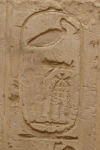
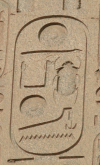
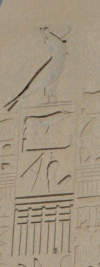
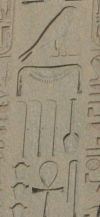
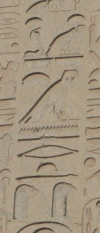
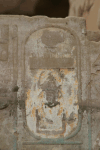
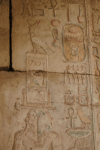
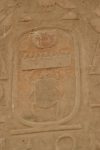

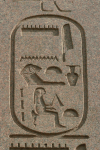

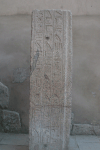


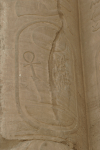
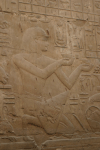

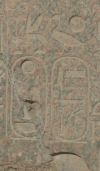

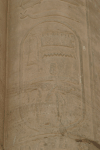



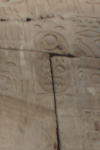

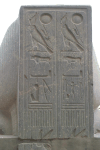
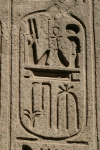
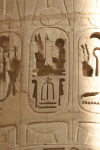
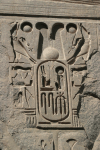


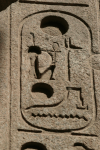

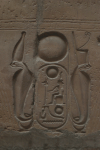





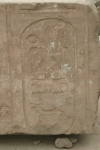
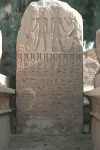

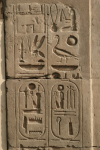
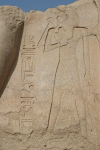

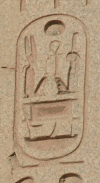
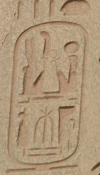
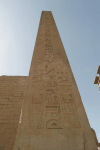
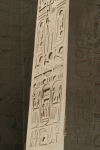
This page contains 49 pictures
Here are the links to the other pages on Egypt:



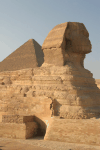
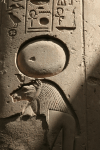

Page last updated on Fri Dec 2 12:49:57 2022 (Mountain Standard Time)
Page last updated on Wed Apr 24 17:39:03 2024 (Mountain Standard Time)
Egypt - Pharaohs of the New Kingdom - 1534 - 1069 BCE on soaring.geichhorn.com